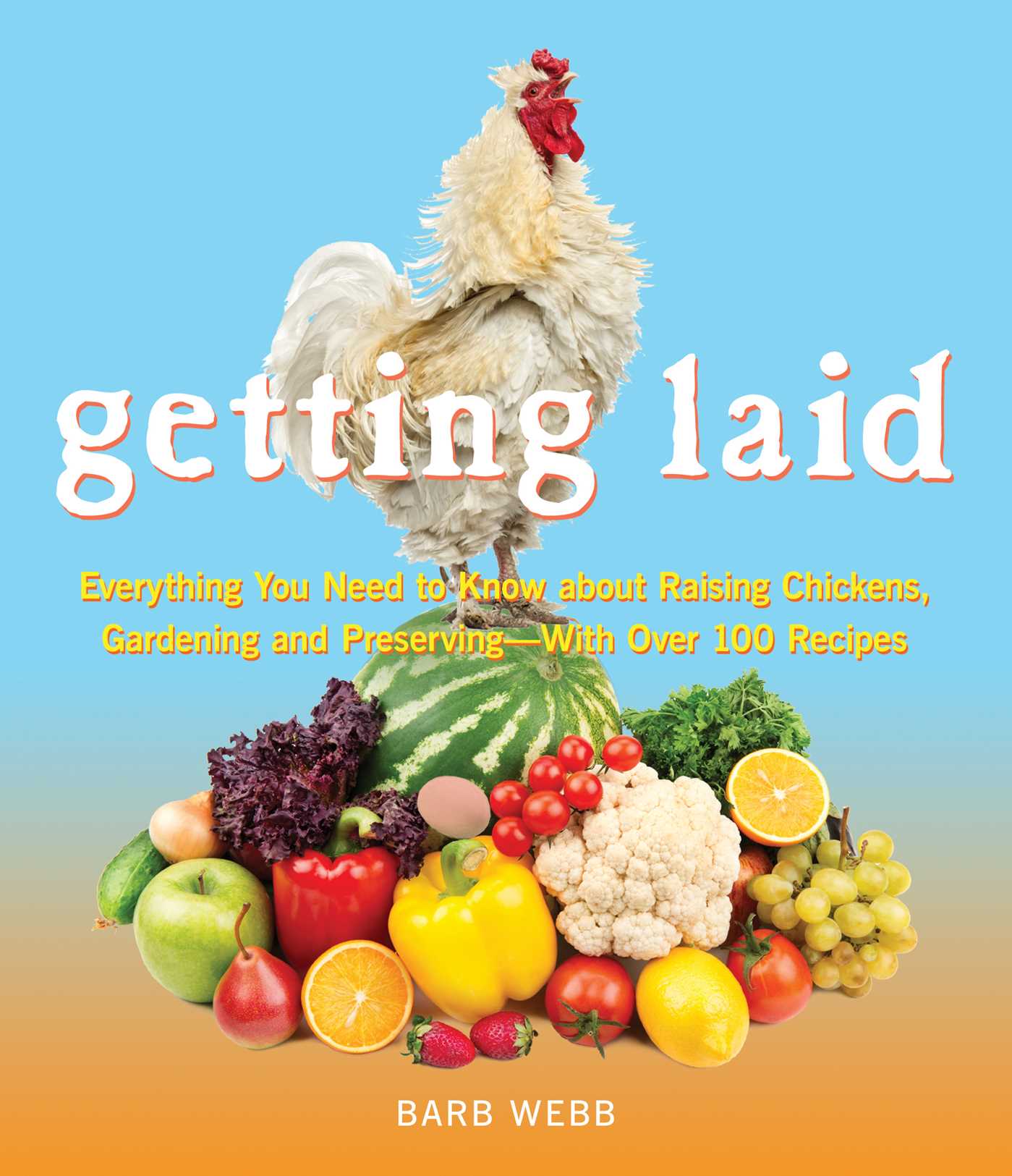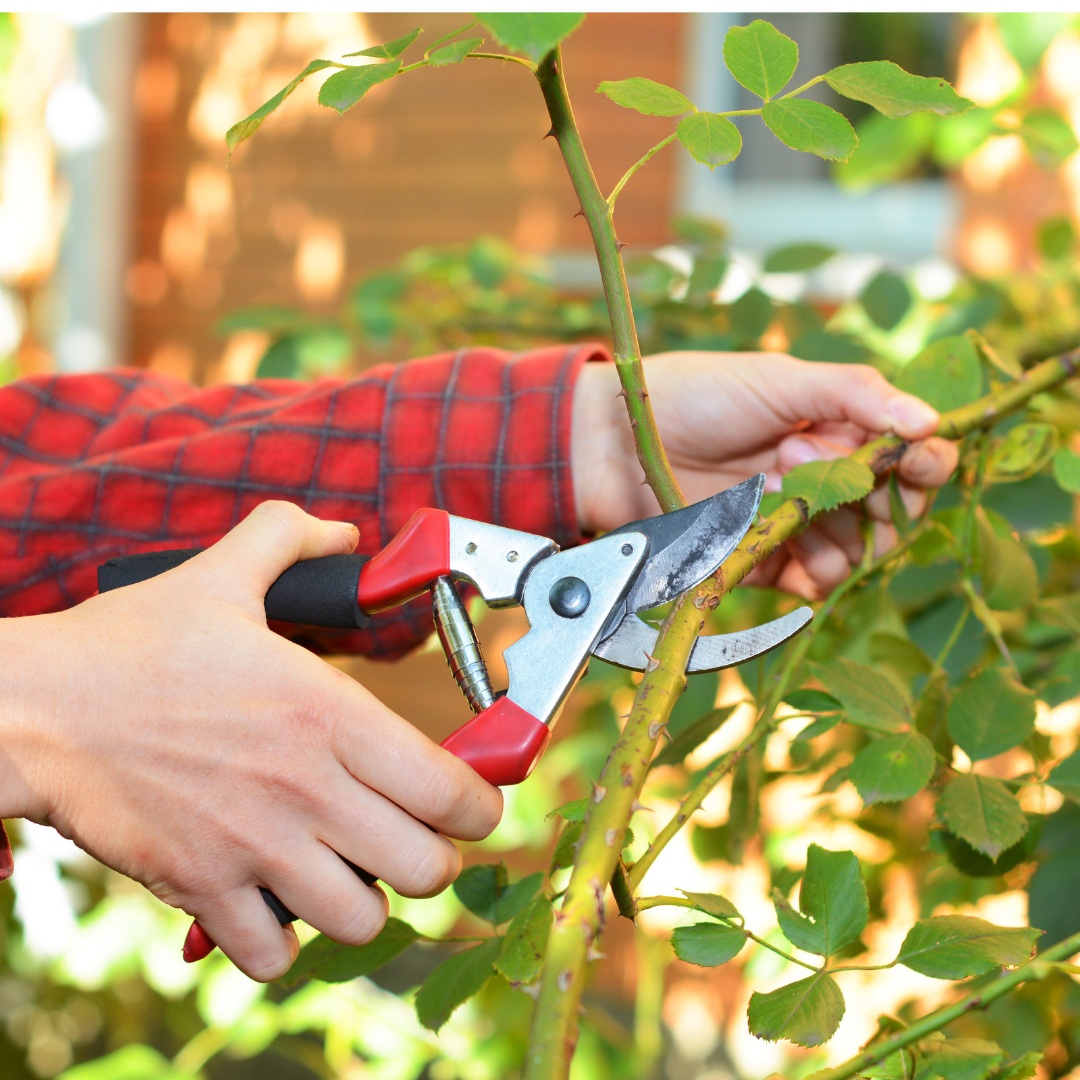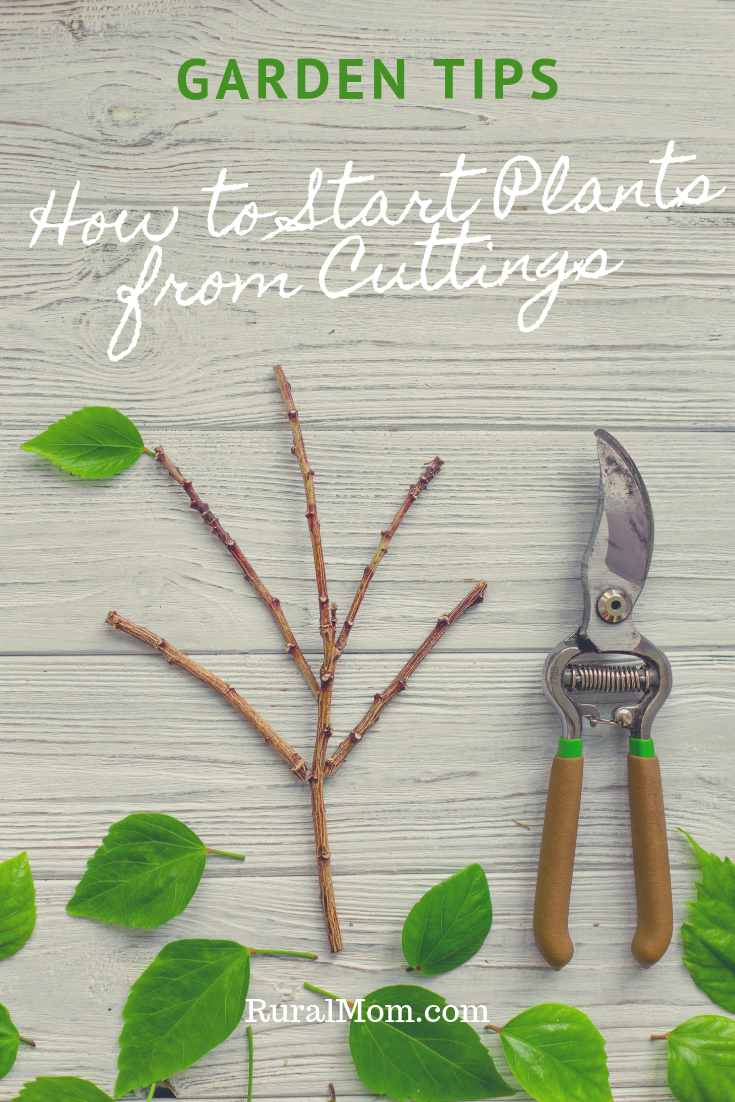When you start plants from cuttings, it’s a patient and hopeful process. When successful, it yields a beautiful new plan for your yard or garden!
Many plants are ideal candidates for plant cuttings from honeysuckle to rose bushes. It’s a terrific way to coax new life from plants that you currently have. You can save money by using your existing plants to help grow your garden or you can “borrow” from a fellow garden to expand your landscape plant varieties.
With just a little know-how, learning how to start plants from cuttings is easy to do and highly rewarding!
Take a cutting from the desired plant.
Plants that do not have bark or a woody stem seem to root best for amateurs. Cut about an 8 or 10 inch piece from a branch on the plant. Make the cut at an angle to maximize the surface area available.
If the cutting is not cut on an angle, snip a half inch or so off to create an angle before trying to root the cutting.
Keep the cutting wet to prepare for rooting.
The worst thing that can happen to a plant is to become dried out. Cuttings are even more sensitive to becoming too dry. Try to keep the time from cutting to starting the rooting process as short as possible. This will enhance your chances for success.
A wet towel, paper or cloth, is a good item to use to keep the cutting moist. Adding a wet sponge to the effort can only make it better. Handle the cutting carefully so that it does not sustain additional damage during transport.
Remove almost all of the leaves.
A few leaves left on the end away from the cut are alright. The lower leaves need to be removed so that they do not interfere with the rooting process. There should no leaves be left in place that will be submerged in the water or buried in the soil depending on your rooting technique.
Most plants root just fine in water.
Inserting the stem into water about 1/2 to 3/4 of the way up is a good way to begin the rooting process. The new plant needs a sunny place to encourage the root growth. The leaves will work to produce food. This will stimulate the plant to produce roots.
It will take between one and two weeks for root growth to get going. Leave the plant in the water until the roots are at least an inch or more in length. It may require an extra week or more before the roots are large enough to sustain growth when transplanted into soil.
Plant the rooted stem into good soil.
Use a good grade of potting soil for planting the new plant. It should be well drained, but kept moist until the plant shows signs of producing new leaf and stem growth. This will signal that the roots to establish in good order. From this point, the plant should have an excellent chance of survival if it receives proper care and sunlight for the type of plant.
Plants can be rooted in a rooting medium.
Most garden stores will carry some type of rooting material that stems can be inserted into for rooting. This medium will give a good base for the root growth and development. It can be tricky to know for sure that the roots have developed without removing the stem and inspecting it.
However, if the plant offers resistance when you pull gently upward on it, the roots are forming. In the same way, if new growth is sustaining on the stem and leaves, the roots are establishing. Once the roots generate, re-pot the plant into soil.
Some plants root well in soil.
This can be a little more difficult that the first two options. With soil, the only sure way to know that roots are forming is that the plant stays alive. It requires careful watering and monitoring of the soil moisture for the same length of time as the other methods. It is a good idea to use a root growth hormone when you start plants from cuttings into soil for rooting. Most garden shops carry some form of this product.
The failure rate when using soil for rooting can be high because not all plants have stems that can absorb enough moisture from soil to survive. You might want to do a little research on the specific plant to determine the best rooting method. The advantage of rooting in soil is that there is no real need to transplant the plant after the roots form.




